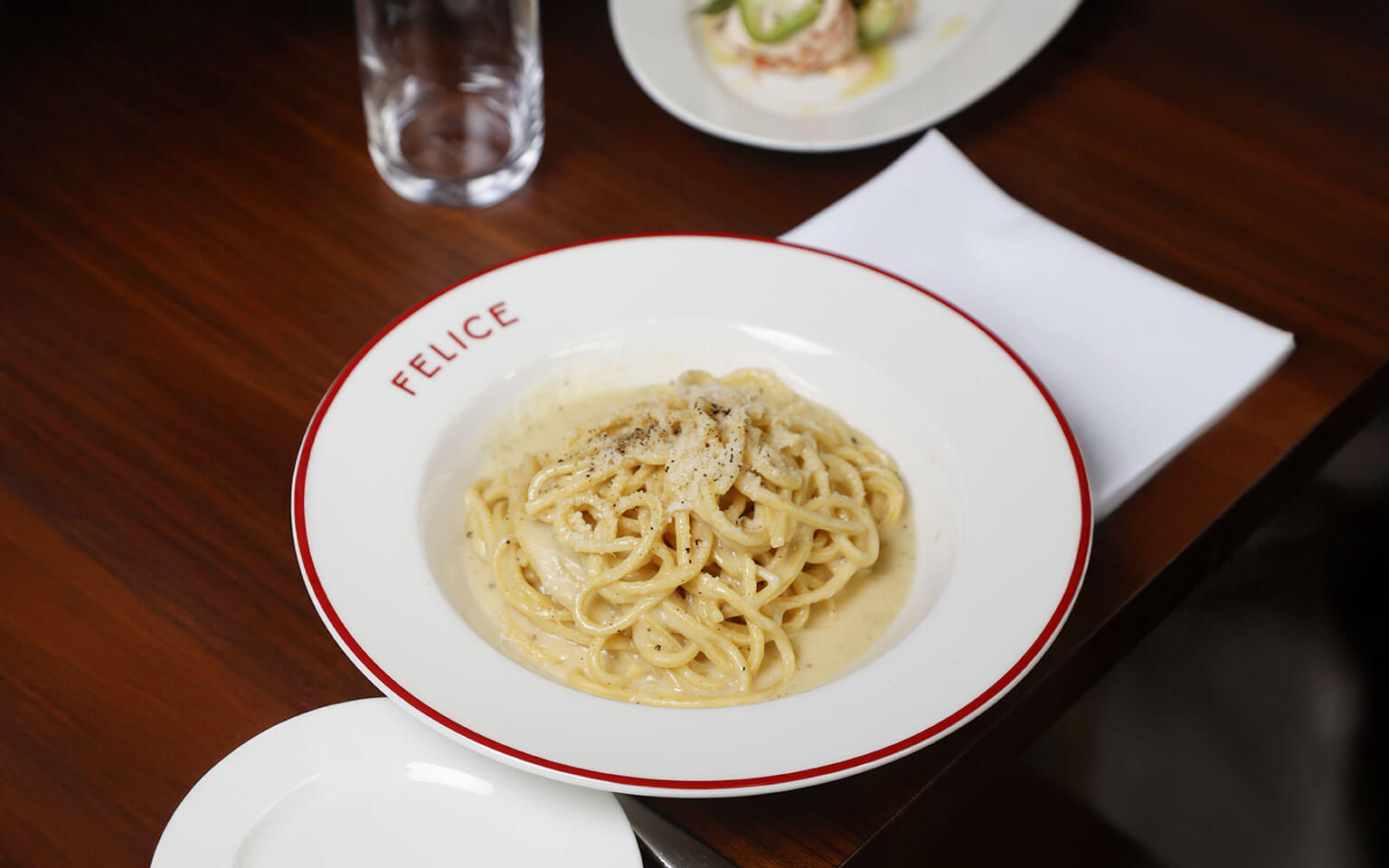Difficulty Medium
Serves 2
Cacio e Pepe
Ingredients 1 cup freshly grated Pecorino Romano cheese
¾ cup freshly grated Parmigiano Reggiano
20g whole black peppercorn (approx. 1½ Tbsp)
2 ½ liters water for boiling (approx. 10 cups)
½ Tbsp coarse salt
200g sweet unsalted butter (approx. 14 Tbsp)
520g tonnarelli or spaghetti (approx. 1 lb)
With a dish as simple and flavorful as Cacio e Pepe, ingredients and timing are key.
Choose high-quality, whole ingredients—black peppercorns rather than ground pepper, blocks of cheese to grate fresh—and prepare them before you begin cooking so you can execute the dish with precision once you start.
Our recipe calls for both Pecorino Romano and Parmigiano Reggiano cheeses, which are both aged, salty hard cheeses. In a pinch, you can use them interchangeably, but Pecorino—a key ingredient in many classic Italian dishes, including this one—is made with sheep’s milk and has a bold, nutty flavor profile, while Parmigiano is made with cow’s milk and has a milder flavor. Their aging times also differ.
Likewise, traditional Roman Cacio e Pepe uses tonnarelli pasta, which is similar to spaghetti but has a thicker, square shape ideal for capturing thick sauces. If you cannot find tonnarelli, a high-quality spaghetti will work just fine.
Unlike many pasta dishes, the water to boil the pasta for Cacio e Pepe should not be heavily salted—use ½ tablespoon of coarse salt at most; the cheeses themselves provide ample saltiness. Remember to save enough starchy pasta water to continue cooking the pasta in the pan and to make the sauce; rather than straining the pasta, remove it from the boiling water using tongs or a steel pasta basket.
METHOD
Prepare the ingredients: Grate the Pecorino Romano cheese and the Parmigiano Reggiano cheese and set aside in a bowl. Grind the black peppercorns using a pestle, a meat pounder, or a pepper grinder adjusted so that it doesn’t grind too finely. Toast the pepper in a large skillet over medium heat for approximately 2 to 3 minutes until you smell an intense pepper aroma. Stir occasionally, ensuring it doesn’t burn. Remove the skillet from heat.
Boil the water in a pot with very little coarse salt (maximum ½ Tbsp). Once it’s boiling, add 1 cup of the pasta cooking water to the toasted black pepper and turn the heat for the skillet to low, then add the butter.
Once the spaghetti has cooked for 5 to 7 minutes, transfer it from the pot to the skillet, allowing it to finish cooking with the pepper. Add another ½ cup of pasta water if needed and stir so it cooks evenly.
While the pasta is cooking, pour 1 cup of the starchy cooking water over the grated Pecorino and Parmigiano cheese and stir quickly so you get a creamy consistency like ricotta.
Add the cheese cream to the pasta a little at a time. Stir into the spaghetti evenly to coat it entirely.
Plate by gathering pasta in a ladle and twirling with precision plating tongs. Gently guide the ladle to a deep plate and slide pasta off, keeping the tongs upright to keep the pasta in a cone shape.


